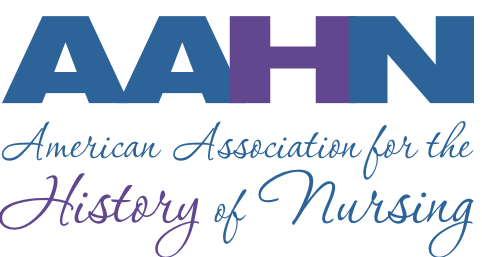As National Nurses Week 2023 begins its celebration of nurses around the world, nurses everywhere will look forward to the future of nursing while also honoring nursing history and all the nurses who came before them.
For some nurses, digging deep into nursing history is a way to learn more and to document the important pieces of a nursing past that could be lost with time. Ashley Graham-Perel, EdD, RN, NPD-BC, MEDSURG-BC, CNE, assistant professor of nursing at the Columbia University School of Nursing and a member of American Association for the History of Nursing (AAHN) is also a nurse researcher who has found this work both personally rewarding and professionally satisfying.
Nurses in the AAHN are committed to a diverse range of topics that piece together the broad, remarkable, and often unrecognized work of nurses in history. Dr. Graham-Perel shared her nursing research experience with Minority Nurse and encourages other nurses to follow those questions they have about the nurses who paved the way.
Can you please tell me about your research and how you became interested in pursuing it?
My research focuses on the lack of racial diversity in nursing education and its direct impact on our diverse patient population. I realized there was a lack of racial diversity throughout my nursing education journey, this includes my associate’s, bachelor’s, master’s, and ultimately, doctoral degrees in nursing. I recognized that I was searching for someone who I could identify with (someone who looked like me and shared my culture) in all of those programs, it was a consistent challenge to do so. In my doctoral degree, I wanted to dig deeper into why this was a problem. Honestly, I was committed to making this research a quantitative venture, however, I realized there were more questions than answers–and that led me to historical research.
I was incredibly fortunate to meet Dr. Sandra (Sandy) Lewenson at Teachers College Columbia University, who introduced our doctoral cohort to historical research. Dr. Lewenson made me realize my love for nursing history and served as my dissertation chair. For my dissertation, I wanted to uncover why there was a lack of racial diversity in nursing education and practice. When did this start? What caused this deficiency and what can be done to correct it? The questions went on and on.
I “peeled the layers back” far enough to discover the first school of nursing established in NYC to educate Black women in nursing, that is, the Lincoln School for Nurses (LSN) of the Bronx, N.Y., 1898 to 1961. Now, out of all my years of schooling and years being an RN, I have never heard of this school. I was ashamed and frustrated at this fact. I conducted a historical investigation on the school, the graduates, and their impact on the health of Black patients.
My research continues as I conduct oral histories of living graduates of LSN. The Lincoln School for Nurses has a beautiful and enriched history that should be acknowledged and celebrated. It is my honor to share it as a nurse historian.
What is most rewarding about researching the history of nursing?
What is most rewarding about researching the history of nursing is filling in the blanks. I had so many questions (I honestly still do), but when you uncover an answer or a link to an answer, it is extremely fulfilling. I get to teach others about historical truths that were hidden from us or simply not included in nursing history.
How did the AAHN help your nursing history work?
When I joined AAHN, it was like finally finding my niche! They were helpful in guiding me with the principles of nursing history and how to efficiently conduct historical research. For example, I served as a co-investigator on the oral history of Dr. Bernardine Mays Lacey, conducted by Dr. Lewenson. We did receive AAHN funding for the oral history (which was published in AJN August 2020) and the film that was subsequently produced.
Lastly, AAHN mentorship is a definite asset of being a member. History is special; finding others who are just as passionate and excited about nursing history and are willing to mentor scholars in the arts of history is one of the greatest gifts of the AAHN.
How will your historical research efforts help broaden and enrich the nursing communities you are in?
My historical research broadens and enriches nursing academia by highlighting historical discriminatory practices that led to the deficiencies in the racial diversity of nursing. Investigating the lack of diversity in nursing education presented truths about how this impacts the recruitment, retention, and ultimate success rates of diverse nursing students.
My continued goal with historical research is to present discriminatory practices, or remnants of such practices, that are still present in our nursing profession and corrective recommendations for our future generations of nurses.
What would you want other nurses to know about this kind of work and why you might encourage them to pursue their own research projects into the history of nursing?
It is essential for all nurses to know that in order to achieve a professional identity, one must know their history. One of Marcus Garvey’s famous quotes relates to this sentiment. He stated, “A people without the knowledge of their past, history, origin and culture, is like a tree without roots.”
Nursing history is essential to understanding our profession, how we became to be, and how our past influences what lies ahead. I encourage nurses to include history in their research (no matter what type of research you are conducting), for there is not one facet of research that is not impacted by nursing history. Lastly, I encourage my peers to remember that if you have more questions than answers, history is the route to take!

